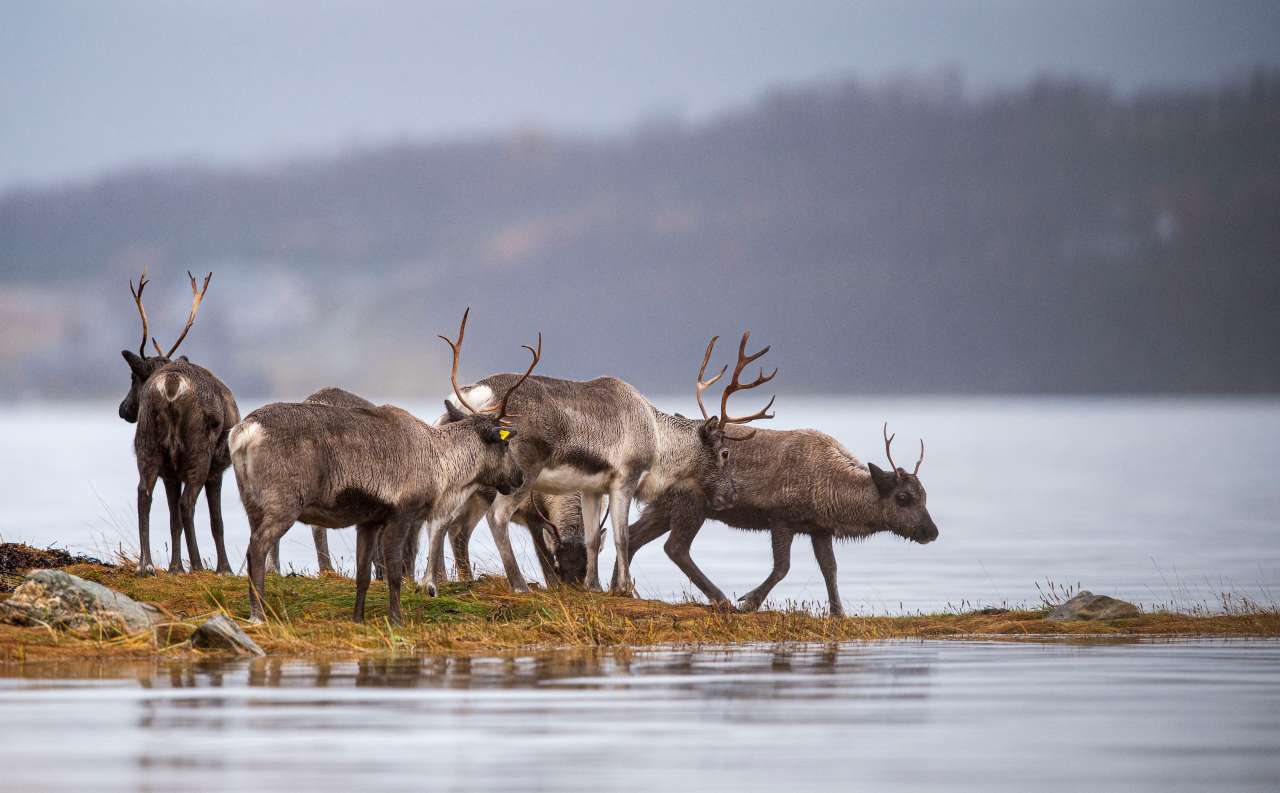Division of Forest and Forest Resources
AirHerd - Exchanging knowledge of drone use in traditional reindeer herding

End: mar 2024
Start: sep 2023
The introduction of unmanned aerial vehicles (UAV), or drones, to traditional reindeer herding has - literally - given the indigenous Sámi herders a new perspective: the aerial one.
Project participants
Jonas Harvard - Mittuniversitetet in Sweden| Start - end date | 01.09.2023 - 31.03.2024 |
| Project manager | Gabriela Wagner |
| Division | Division of Forest and Forest Resources |
| Department | Wildlife and Rangelands |
Areas of hard-to-reach reindeer rangelands can now be accessed through drone cameras, and drones can make finding, collecting and driving reindeer easier. Increased use of drones can both reduce the herders' CO2 print and lower fuel costs by reducing the number of fossil-driven vehicle operations (ATVs, snow scooters, helicopters), broaden access to the herding profession through less physically demanding conditions, improve health and safety for the herders, and not least improve animal welfare by reducing stress to the reindeer. Drones can also support the herders in their eternal conflict with predators.
Although technical and legal limitations of commercially available drones remain and legal issues regarding operation beyond line of sight (BVLOS) need to be resolved, a main barrier to large scale implementation of drones in reindeer herding consists of integrating technical operational knowledge with experience based knowledge on reindeer herding.
AirHerd is a small scale project mapping reindeer herders’ experiences with drone technology in traditional reindeer herding. The aim is to improve cross-border knowledge exchange and co-create ideas for large scale research projects covering herders’ requirements for the future.
AirHerd builds a knowledge base on the extent of drone use in reindeer herding districts (Swedish Sámi villages and Norwegian Siidas) and maps user related advantages and challenges to drone technology uptake in traditional herding practices. We investigate types of drone operations and estimate current and putative future reductions in CO2 emissions by reducing fossil fueled operations and map how drones may contribute to mitigating cross-border pasture conflicts.
We will encourage Swedish-Norwegian knowledge exchange through active stakeholder engagement, semi-structured interviews and discussions around curated action based material (film, photography) from the field. The project thereby provides a scientific knowledge base for cross-border strategies and action plans towards alleviating knowledge barriers, legal or administrative obstacles for traditional Sámi reindeer herders after project completion.
Publications in the project
Abstract
No abstract has been registered

